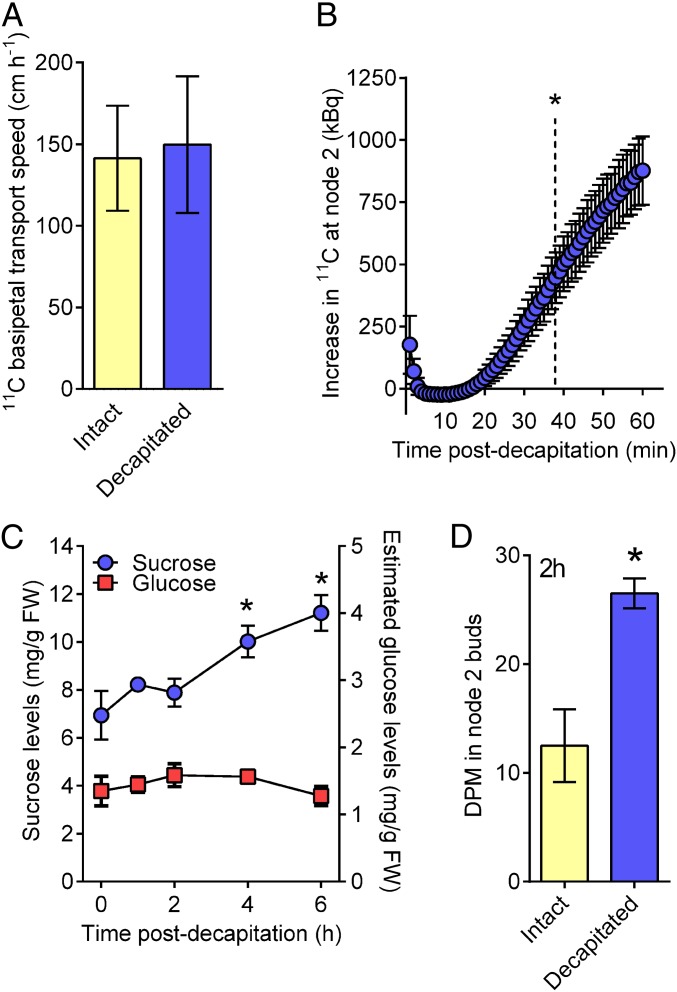Fig. 2.
Loss of apical dominance causes rapid carbon redistribution and sucrose accumulation in axillary buds. (A) Speed of 11C-photoassimilate flow through the phloem is rapid but unchanged after decapitation. n = 3. (B) Decapitation rapidly increased the amount of 11C radioactivity that accumulated at node 2 after 11CO2 feeding to the uppermost fully expanded leaf. n = 3. Data represent the increase in radioactivity observed in decapitated plants over intact controls ± SEM. Dotted line indicates the time at which the difference became statistically significant based on a one-sample, two-tailed t test. (C) Sucrose, but not glucose, accumulated in node 2 buds after decapitation. Twenty to twenty-four buds per replicate, n = 6. An ANOVA with a Dunnett’s multiple comparison of means test was performed comparing all samples with intact controls. (D) Decapitation after 14C-sucrose feeding to node 4 petioles enhanced 14C uptake in node 2 buds. Six buds per replicate, n = 4. Statistical significance from intact controls was determined using a two-tailed t test. All data are mean ± SEM. *Statistical difference from controls (P ≤ 0.05).

